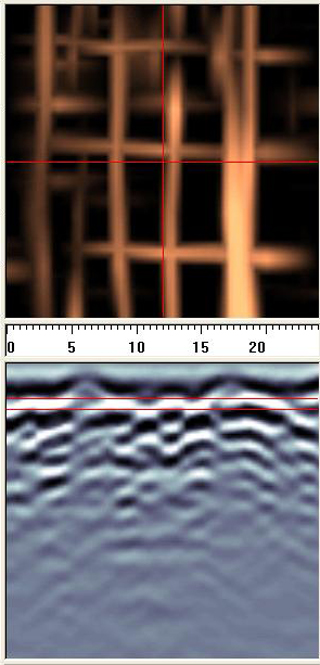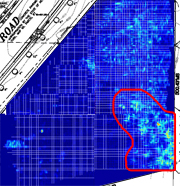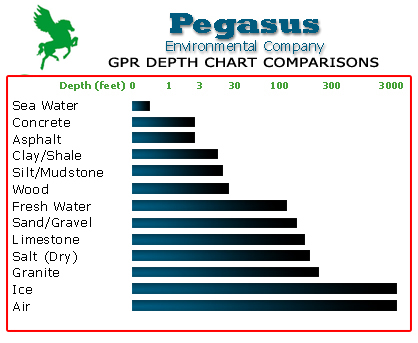|
|
|
|
Ground-Penetrating Radar (GPR) uses pulses of electromagnetic waves focused into solid surfaces to detect differences in spectral waves reflecting back to the surface. For instance, the GPR scanner emits a radar signal into a slab of concrete. If there is nothing in the concrete, or below, that wave will continue to travel until it dissipates. If a different substance is embedded in or below the concrete, the electromagnetic wave will be reflected back to the surface, indicating the size, shape and even the type of material below. Pegasus Environmental is a leading GPR-testing national and regional contractor, providing scanning and digital image analysis accurate to within a fraction of an inch. GPR is capable of detecting:
Locating these types of hazards without digging is critical to testing structural integrity for buildings, parking garages, bridges and roadways. Embedded Steel Imaging -- Our technique penetrates nearly any solid surface, including concrete, cement, earth or ice, to detect ferrous materials and provide valuable data relative to precise location, density, thickness, depth and orientation up to and exceeding 20 meters. Pegasus provides digital spectral analysis that assigns colors to embedded objects, identifying materials and density in a highly visual report. Embedded PVC -- Because GPR reflects wave differentials in subsurface materials, PVC pipes will be clearly indicated on our standard test analyses. Voids, Cracks and Chasms -- GPR is a highly effective tool for indentifying and locating voids and chasms. It is limited in its ability to identify cracks, depending on the size and angle of the fracture. Large cracks may be indicated in the test analyses. Pulse Velocity Testing -- Pegasus Environmental can use this technique to identify voids, fissures and cracks beneath the surface of the concrete. Pulse testing can accurately assess the depth of voids and whether they are pooled with water or gas. Pile Integrity Testing -- Concrete pilings can be evaluated using GPR to determine the structural integrity far below the surface prior to excavation.
Any questions? Contact Pegasus Environmental, and we will eagerly respond to your general or specific questions. |






